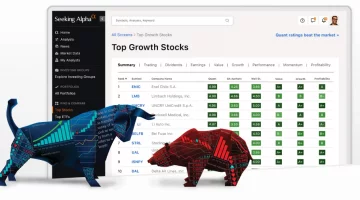Mid-Cap Stocks for Beginners

Mid-cap stocks are categorized as those companies with a market capitalization between $2 billion and $10 billion. Usually, they're well-established companies somewhere between the slower growing large-caps and the rapidly growing small-caps. Recently, mid-cap stocks have done better than both the large-cap and small-cap competition with very little added risk.
We're going to examine the principal characteristics of mid-cap stocks as well as how to analyze them and why you should strongly consider these often ignored investments for your portfolio.
Why They Should be Part of Your Portfolio
The better historical performance isn’t the only reason you might want to consider mid-caps as part of your portfolio. Several additional characteristics are valuable as well:
- The majority of mid-caps are simply small-caps that grew bigger over time. Additional growth will give them the opportunity to eventually become large-cap businesses.
- Part of expanding is the ability to obtain additional financing to support that growth. This is much more difficult for small-cap companies to do.
- The principal advantage over large-caps relates to earnings growth. Mid-cap companies haven't yet reached the stage where earnings diminish and dividends have become a significant part of a stock's total return.
- Maybe the most overlooked reason for investing money in mid-caps is that they get less analyst coverage than the large-caps. Many of the greatest performing stocks have been ignored businesses that suddenly became popular, generating the institutional purchasers that are essential to push their price higher.
In the end, investing in mid-caps makes sense because they provide investors the best of both worlds: small-cap growth along with large-cap stability.
Profitability
One of the great things about mid-cap stocks is that the businesses are generally profitable and have been for quite awhile.
Consider these advantages:
- Mid-cap companies usually have experienced management teams.
- On the average, a mid-cap's earnings tend to grow at a quicker rate than the average small-cap and accomplish this with less volatility and risk.
- Along with earnings growth, the mid-cap company is in a good position to maintain their earnings for the foreseeable future. That's what ultimately turns a mid-cap into a large-cap.
- Clues that suggest a corporation's earnings are headed in the right direction include growing gross and operating margins in combination with lower inventories and accounts receivable. Turning inventory and receivables faster usually leads to greater cash flow and increased profits.
All of these features also help reduce risk. Mid-caps tend to have these attributes more frequently than small or large-caps.
Growth
Revenue and earnings growth are two of the most important factors to long-term returns.
Recently, mid-cap stocks have done better than both large-cap and small-cap stocks due to their higher growth in both revenue and earnings. It's likely that the ability of mid-caps to respond faster than large-caps, and their greater financial stability compared to small-caps, are their greatest advantages.
When researching a mid-cap firm, look into the quality of their revenue growth:
- When gross margins, operating margins, and revenues are all increasing, it's an excellent indicator that the company is developing greater economies of scale, resulting in higher shareholder profits.
- Another great indicator of healthy revenue growth is when lowered total debt improves cash flow.
Consider adding mid-cap stocks to your portfolio. There's a lot to like about them. The great opportunities for both profitability and growth, along with the relatively low risk, can make them an excellent addition. Do some research and find a couple of good mid-caps; you'll be glad you did.
More to Read:
Previous Posts:






